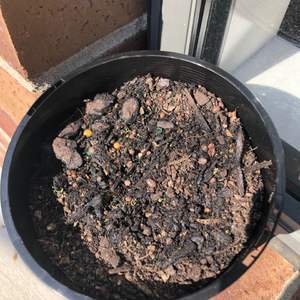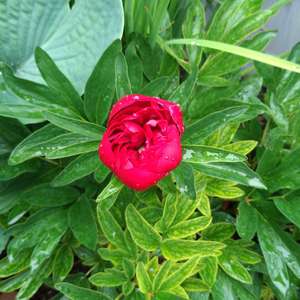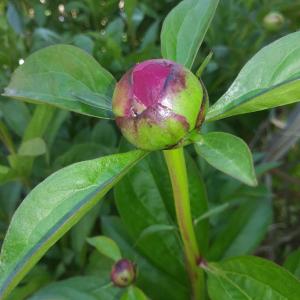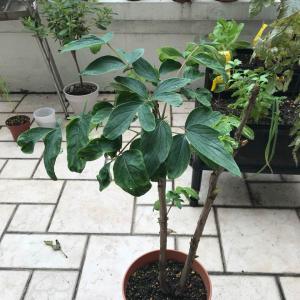文章
Miss Chen
2022年01月13日

The camellia is a flowering shrub cultivated for more than 1,000 years and is the southern U.S. answer to the peony. Similarities between peonies and camellias include lushly petaled blooms and a tendency to live for more than a century. They live so long because they grow slowly. Camellias are part of the Theaceae or tea plant family, including the most common ornamental species, C. japonica and C. sasanqua. Camellia sinensis yields flowers that produce tea, but it is not as ornamental. They can be planted anytime except for the hottest summer months.
Camellias are evergreens with dark, glossy leaves. Flowers may be white, pink, red, or streaked, and blooms can be single or double. It is popularly used in shrub borders, backgrounds, and loose hedges. Camellia can be used as an espalier specimen—training the shrub to grow flat against a fence or wall. Camellias stand for faithfulness and longevity in the language of flowers and are a lush addition to winter wedding floral arrangements.
Although the plant is an indigenous species in the Philippines, the flower became commonly named for Moravian Jesuit priest Brother Josef Kamel, a botanist, pharmacist, and missionary who classified plants in the Philippines.
Botanical Name Camellia spp.
Common Names Camellia
Plant Type Broadleaf evergreen shrub
Mature Size 2 to 12 feet (depending on variety)
Sun Exposure Part shade
Soil Type Moist, rich soil
Soil pH 5.5 to 6.5 (acidic)
Bloom Time Late fall, winter, and early spring
Flower Color White, pink, red, yellow, or lavender
Hardiness Zones 7 to 9 (USDA); a few varieties hardy in zone 6B
Native Area Japan, China, Korea
Camellia Care
Camellias are best planted in rich, moist soil in a part-shade location. If planting multiple camellia shrubs, space them at least 5 feet apart. They do not like to compete for water and nutrients with trees in close proximity. Know the mature size of your camellia, and plan accordingly if planting close to a window or home foundation. You do not need to amend the backfill soil at planting time, instead, rake compost or well-rotted manure into the top few inches of the soil.
If your camellia develops yellow leaves, inspect the undersides of leaves for tea scale, an insect pest that feeds on leaf juices. Although the leaves will appear yellow on top, the undersides will look white or fuzzy. Treat tea scale with horticultural oil. An iron deficiency can also cause yellow leaves. Test your soil, and feed your camellias with an iron supplement if needed.
Light
Camellias thrive in part shade. Camellia sasanqua cultivars can take more sun than japonica types.
Soil
Camellias require well-drained soil, and an ideal soil pH for camellias is within the 6.0 to 6.5 range. If your soil is dense clay and doesn't drain well, use containers instead. Choose at least an 18-inch container and a rich, loamy potting soil.
Water
Water camellias so that they are consistently moist. Dry periods that occur during bud development result in fewer flowers with a lower petal count. Drought-stressed plants also open the door to spider mite infestation. Apply a 3-inch layer of mulch to moderate soil temperatures, retain soil moisture, and stifle weeds.
Temperature and Humidity
Camellias are reliably hardy in USDA zones 7 to 9, although the fall-blooming ‘Winter’ series and spring-blooming ‘April’ series of camellias are hardy in zone 6B. Gardeners in cold climates can increase the chances of their camellias surviving the winter by carefully selecting their permanent site in the landscape. A northern-facing planting has an advantage over a warmer southern area. Southern locations may cause the plant to break dormancy too early, resulting in the loss of flowers to frost damage. A north-facing site combined with a building, hedge, or fence that acts as a windbreak will give cold climate gardeners the best success rate.
Fertilizer
Proper fertilization is essential for a large flower count. Apply a potassium-rich fertilizer in July to facilitate petal development. Apply a slow-release nitrogen fertilizer in the spring to keep foliage dark green and lush. You can also shop for fertilizers designed explicitly for camellias or even an azalea fertilizer.
Camellia Varieties
'April Dawn': Hardy in zone 6; the white flowers are streaked with pink
'Elfin Rose': Pale pink blooms that appear in October and November
'Fragrant Pink': Small pink flower clusters with a sweet fragrance that is especially obvious on warm winter days
'Francis Eugene Phillips': Highly sought after for ornamental fringed foliage and its ruffled pink flowers
'Yuletide': Features red blooms on a compact, four-foot-tall shrub
Pruning should be kept at a minimum with camellias, as it can ruin the shrub's natural shape. Prune camellias after flowering to keep the interior of the shrubs free of dead and non-blooming branches. Remove any branches that droop on the ground.
Propagating Camellias
Camellias can be propagated by seeds, but it can take quite a long time to grow mature plants. It's more common to propagate by layering.
In summer, bend a long stem down to the ground and make an angled nick in it. Loop the stem into the soil, so the wounded area is buried in the ground, and use a rock or stiff wire to hold it in place in the soil. Over the course of a full growing season, a good network of roots should develop from the wound in the buried stem. At this point, you can clip it away from the parent plant and dig up the offspring to move elsewhere.

How to Grow Camellia From Seed
Camellias do not come true from seed, at least, very rarely. Camellia seeds ripen at different times depending on variety and location, but it's usually in the early fall. When seeds are mature, the pod begins to crack slightly and seeds are ready to be picked. If you have seeds, soak the seed for 12 hours or carefully crack the hard coat to aid in germination. Plant in good soil, peat moss, or a combination of peat moss and sand. Keep the soil damp. Seeds usually germinate in one month if planted immediately after harvesting. Some seeds may not germinate until spring. Better germination will occur when seeds are planted immediately upon ripening.
Potting or Repotting Camellias
Once the seeds have germinated, transplant into containers or outside. Cut off the taproot to produce a more fibrous root system. This step is helpful if planting in a container. If planting in a landscape, the taproot will help the plant survive during periods of drought or severe cold.
Overwintering
Camellia is an evergreen shrub that blooms in the winter in the South, where the winters are mild. If you have camellia in a container and you live in cooler climates, ensure that the soil and root systems are protected from freezing solid. Dry leaves and pine straw can be used as an excellent source of insulation; mound them around and over the top, fully covering the container and soil. If you live in a colder climate, such as zone 7 or lower, keep the pot covered until spring. If you expect extreme cold or a prolonged cold snap, protect the plant by creating a burlap or canvas fence around it. Fill the space with leaves.
Camellias are evergreens with dark, glossy leaves. Flowers may be white, pink, red, or streaked, and blooms can be single or double. It is popularly used in shrub borders, backgrounds, and loose hedges. Camellia can be used as an espalier specimen—training the shrub to grow flat against a fence or wall. Camellias stand for faithfulness and longevity in the language of flowers and are a lush addition to winter wedding floral arrangements.
Although the plant is an indigenous species in the Philippines, the flower became commonly named for Moravian Jesuit priest Brother Josef Kamel, a botanist, pharmacist, and missionary who classified plants in the Philippines.
Botanical Name Camellia spp.
Common Names Camellia
Plant Type Broadleaf evergreen shrub
Mature Size 2 to 12 feet (depending on variety)
Sun Exposure Part shade
Soil Type Moist, rich soil
Soil pH 5.5 to 6.5 (acidic)
Bloom Time Late fall, winter, and early spring
Flower Color White, pink, red, yellow, or lavender
Hardiness Zones 7 to 9 (USDA); a few varieties hardy in zone 6B
Native Area Japan, China, Korea
Camellia Care
Camellias are best planted in rich, moist soil in a part-shade location. If planting multiple camellia shrubs, space them at least 5 feet apart. They do not like to compete for water and nutrients with trees in close proximity. Know the mature size of your camellia, and plan accordingly if planting close to a window or home foundation. You do not need to amend the backfill soil at planting time, instead, rake compost or well-rotted manure into the top few inches of the soil.
If your camellia develops yellow leaves, inspect the undersides of leaves for tea scale, an insect pest that feeds on leaf juices. Although the leaves will appear yellow on top, the undersides will look white or fuzzy. Treat tea scale with horticultural oil. An iron deficiency can also cause yellow leaves. Test your soil, and feed your camellias with an iron supplement if needed.
Light
Camellias thrive in part shade. Camellia sasanqua cultivars can take more sun than japonica types.
Soil
Camellias require well-drained soil, and an ideal soil pH for camellias is within the 6.0 to 6.5 range. If your soil is dense clay and doesn't drain well, use containers instead. Choose at least an 18-inch container and a rich, loamy potting soil.
Water
Water camellias so that they are consistently moist. Dry periods that occur during bud development result in fewer flowers with a lower petal count. Drought-stressed plants also open the door to spider mite infestation. Apply a 3-inch layer of mulch to moderate soil temperatures, retain soil moisture, and stifle weeds.
Temperature and Humidity
Camellias are reliably hardy in USDA zones 7 to 9, although the fall-blooming ‘Winter’ series and spring-blooming ‘April’ series of camellias are hardy in zone 6B. Gardeners in cold climates can increase the chances of their camellias surviving the winter by carefully selecting their permanent site in the landscape. A northern-facing planting has an advantage over a warmer southern area. Southern locations may cause the plant to break dormancy too early, resulting in the loss of flowers to frost damage. A north-facing site combined with a building, hedge, or fence that acts as a windbreak will give cold climate gardeners the best success rate.
Fertilizer
Proper fertilization is essential for a large flower count. Apply a potassium-rich fertilizer in July to facilitate petal development. Apply a slow-release nitrogen fertilizer in the spring to keep foliage dark green and lush. You can also shop for fertilizers designed explicitly for camellias or even an azalea fertilizer.
Camellia Varieties
'April Dawn': Hardy in zone 6; the white flowers are streaked with pink
'Elfin Rose': Pale pink blooms that appear in October and November
'Fragrant Pink': Small pink flower clusters with a sweet fragrance that is especially obvious on warm winter days
'Francis Eugene Phillips': Highly sought after for ornamental fringed foliage and its ruffled pink flowers
'Yuletide': Features red blooms on a compact, four-foot-tall shrub
Pruning should be kept at a minimum with camellias, as it can ruin the shrub's natural shape. Prune camellias after flowering to keep the interior of the shrubs free of dead and non-blooming branches. Remove any branches that droop on the ground.
Propagating Camellias
Camellias can be propagated by seeds, but it can take quite a long time to grow mature plants. It's more common to propagate by layering.
In summer, bend a long stem down to the ground and make an angled nick in it. Loop the stem into the soil, so the wounded area is buried in the ground, and use a rock or stiff wire to hold it in place in the soil. Over the course of a full growing season, a good network of roots should develop from the wound in the buried stem. At this point, you can clip it away from the parent plant and dig up the offspring to move elsewhere.

How to Grow Camellia From Seed
Camellias do not come true from seed, at least, very rarely. Camellia seeds ripen at different times depending on variety and location, but it's usually in the early fall. When seeds are mature, the pod begins to crack slightly and seeds are ready to be picked. If you have seeds, soak the seed for 12 hours or carefully crack the hard coat to aid in germination. Plant in good soil, peat moss, or a combination of peat moss and sand. Keep the soil damp. Seeds usually germinate in one month if planted immediately after harvesting. Some seeds may not germinate until spring. Better germination will occur when seeds are planted immediately upon ripening.
Potting or Repotting Camellias
Once the seeds have germinated, transplant into containers or outside. Cut off the taproot to produce a more fibrous root system. This step is helpful if planting in a container. If planting in a landscape, the taproot will help the plant survive during periods of drought or severe cold.
Overwintering
Camellia is an evergreen shrub that blooms in the winter in the South, where the winters are mild. If you have camellia in a container and you live in cooler climates, ensure that the soil and root systems are protected from freezing solid. Dry leaves and pine straw can be used as an excellent source of insulation; mound them around and over the top, fully covering the container and soil. If you live in a colder climate, such as zone 7 or lower, keep the pot covered until spring. If you expect extreme cold or a prolonged cold snap, protect the plant by creating a burlap or canvas fence around it. Fill the space with leaves.
0
0
文章
ritau
2020年04月05日

The peony or paeony is a flowering plant in the genus Paeonia, the only genus in the family Paeoniaceae. Peonies are native to Asia, Europe and Western North America. Scientists differ on the number of species that can be distinguished, ranging from 25 to 40, although the current consensus is 33 known species. The relationships between the species need to be further clarified.
Peonies are among the most popular garden plants in temperate regions. Herbaceous peonies are also sold as cut flowers on a large scale, although generally only available in late spring and early summer. An emerging source of peonies in mid to late summer is the Alaskan market. Unique growing conditions due to long hours of sunlight create availability from Alaska when other sources have completed harvest.
The peony is among the longest-used flowers in Eastern culture. Along with the plum blossom, it is a traditional floral symbol of China, where the Paeonia suffruticosa is called 牡丹 (mǔdān). It is also known as 富貴花 (fùguìhuā) "flower of riches and honour" or 花王 (huawang) "king of the flowers", and is used symbolically in Chinese art. In 1903, the Qing dynasty declared the peony as the national flower. Currently, the Republic of China government in Taiwan designates the plum blossom as the national flower, while the People's Republic of China government has no legally designated national flower. In 1994, the peony was proposed as the national flower after a nationwide poll, but the National People's Congress failed to ratify the selection. In 2003, another selection process was initiated, but no choice has been made to date.

The ancient Chinese city Luoyang has a reputation as a cultivation centre for the peonies. Throughout Chinese history, peonies in Luoyang have been said to be the finest in the country. Dozens of peony exhibitions and shows are still held there annually.
In the Middle Ages, peonies were often painted with their ripe seed-capsules, since it was the seeds, not the flowers, which were medically significant. Ancient superstition dictated that great care be taken not to be seen by a woodpecker while picking the plant's fruit, or the bird might peck out one's eyes.
In 1957, the Indiana General Assembly passed a law to make the peony the state flower of Indiana, a title which it holds to this day. It replaced the zinnia, which had been the state flower since 1931.
Mischievous nymphs were said to hide in the petals of the Peony, giving it the meaning of Shame or Bashfulness in the Language of Flowers. While the peony takes several years to re-establish itself when moved, it blooms annually for decades once it has done so.
Peonies tend to attract ants to the flower buds. This is due to the nectar that forms on the outside of the flower buds, and is not required for the plants' own pollination or other growth. The presence of ants is thought to provide some deterrence to other harmful insects though, so the production of ant-attracting nectar is plausibly a functional adaptation.Peonies are a common subject in tattoos, often used along with koi-fish. The popular use of peonies in Japanese tattoo was inspired by the ukiyo-e artist Utagawa Kuniyoshi's illustrations of Suikoden, a classical Chinese novel. His paintings of warrior-heroes covered in pictorial tattoos included lions, tigers, dragons, koi fish, and peonies, among other symbols. The peony became a masculine motif, associated with a devil-may-care attitude and disregard for consequence.
Famous painters of peonies have included Conrad Gessner (ca. 1550) and Auguste Renoir in 1879. Paeonia officinalis can be found in the altar picture of Maria im Rosenhag by Schongauer in the former Dominican Church in Colmar.The Italian Jesuit, painter and architect Giuseppe Castiglione (1688-1766), who worked at the court of the Qianlong Emperor in the Qing dynasty, painted peonies.

Peonies are among the most popular garden plants in temperate regions. Herbaceous peonies are also sold as cut flowers on a large scale, although generally only available in late spring and early summer. An emerging source of peonies in mid to late summer is the Alaskan market. Unique growing conditions due to long hours of sunlight create availability from Alaska when other sources have completed harvest.
The peony is among the longest-used flowers in Eastern culture. Along with the plum blossom, it is a traditional floral symbol of China, where the Paeonia suffruticosa is called 牡丹 (mǔdān). It is also known as 富貴花 (fùguìhuā) "flower of riches and honour" or 花王 (huawang) "king of the flowers", and is used symbolically in Chinese art. In 1903, the Qing dynasty declared the peony as the national flower. Currently, the Republic of China government in Taiwan designates the plum blossom as the national flower, while the People's Republic of China government has no legally designated national flower. In 1994, the peony was proposed as the national flower after a nationwide poll, but the National People's Congress failed to ratify the selection. In 2003, another selection process was initiated, but no choice has been made to date.

The ancient Chinese city Luoyang has a reputation as a cultivation centre for the peonies. Throughout Chinese history, peonies in Luoyang have been said to be the finest in the country. Dozens of peony exhibitions and shows are still held there annually.
In the Middle Ages, peonies were often painted with their ripe seed-capsules, since it was the seeds, not the flowers, which were medically significant. Ancient superstition dictated that great care be taken not to be seen by a woodpecker while picking the plant's fruit, or the bird might peck out one's eyes.
In 1957, the Indiana General Assembly passed a law to make the peony the state flower of Indiana, a title which it holds to this day. It replaced the zinnia, which had been the state flower since 1931.
Mischievous nymphs were said to hide in the petals of the Peony, giving it the meaning of Shame or Bashfulness in the Language of Flowers. While the peony takes several years to re-establish itself when moved, it blooms annually for decades once it has done so.
Peonies tend to attract ants to the flower buds. This is due to the nectar that forms on the outside of the flower buds, and is not required for the plants' own pollination or other growth. The presence of ants is thought to provide some deterrence to other harmful insects though, so the production of ant-attracting nectar is plausibly a functional adaptation.Peonies are a common subject in tattoos, often used along with koi-fish. The popular use of peonies in Japanese tattoo was inspired by the ukiyo-e artist Utagawa Kuniyoshi's illustrations of Suikoden, a classical Chinese novel. His paintings of warrior-heroes covered in pictorial tattoos included lions, tigers, dragons, koi fish, and peonies, among other symbols. The peony became a masculine motif, associated with a devil-may-care attitude and disregard for consequence.
Famous painters of peonies have included Conrad Gessner (ca. 1550) and Auguste Renoir in 1879. Paeonia officinalis can be found in the altar picture of Maria im Rosenhag by Schongauer in the former Dominican Church in Colmar.The Italian Jesuit, painter and architect Giuseppe Castiglione (1688-1766), who worked at the court of the Qianlong Emperor in the Qing dynasty, painted peonies.

0
0
文章
A🎌王木木💮
2019年11月28日

Now it’s the month of Scorpio.In the next few issues,we’ll introduce the plants suitable for Scorpio.Today we’re going to introduce the first one--Paeonia suffruticosa
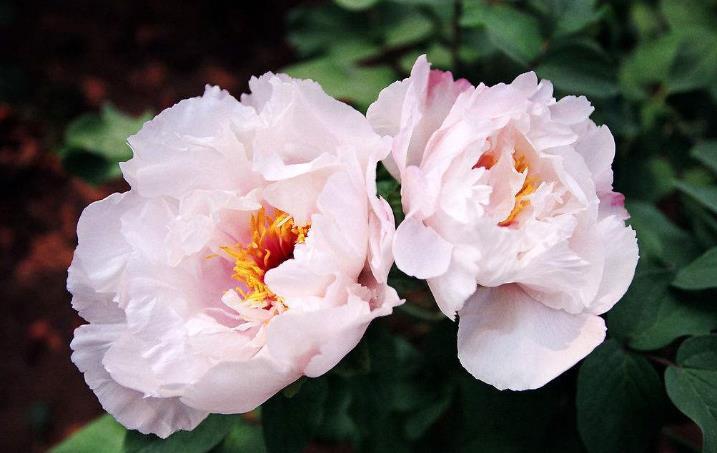
Other common names:
peony 'Rimpo'
SynonymsPaeonia × suffruticosa Bird of Rimpo
Paeonia × suffruticosa 'Bird of Rimpo'
Family:Paeoniaceae
Genus:Paeonia may be herbaceous perennials or deciduous sub-shrubs with large, divided leaves and showy large bowl-shaped flowers, usually in early summer
Details:'Rimpo' is a shrub, 1.2m high, with rigid upright stems, slightly glaucous green leaves, and spicily fragrant, semi-double flowers, up to 24cm across, which have purplish red petals, cream stigmas, and yellow anthers, in late spring or early summer
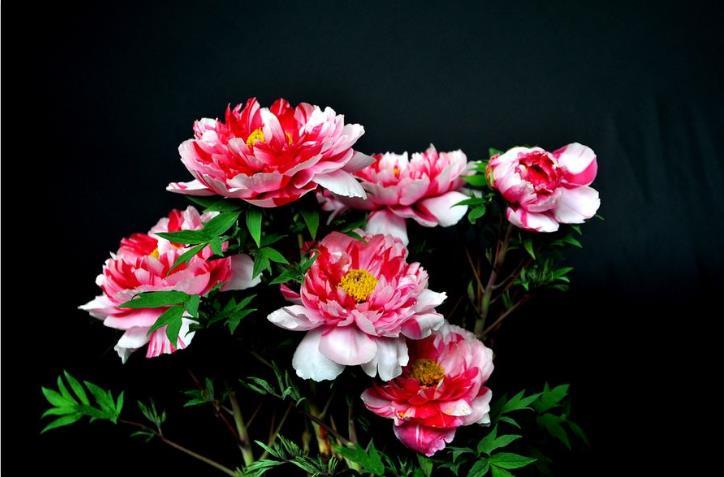
How to grow
Cultivation Grow in deep, fertile, humus-rich, moist but well-drained soil in full sun or partial shade, in an open position but with shelter from cold, drying winds; for more advice, see tree peony cultivation
Propagation Propagate by semi-ripe cuttings in summer, or by grafting in winter
Suggested planting locations and garden types Flower borders and beds Wall-side Borders Cut Flowers Low Maintenance Cottage & Informal Garden City & Courtyard Gardens
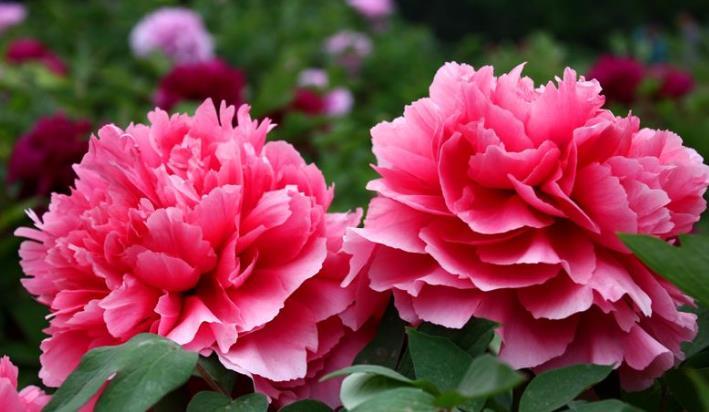
How to care
PruningPruning group 1 (little or no pruning of trees and shrubs)
Pests can be affected by leaf and bud eelworm and soil-dwelling swift moth larvae
Diseases May be affected by virus diseases, honey fungus, peony wilt, and fungal leaf spot

Other common names:
peony 'Rimpo'
SynonymsPaeonia × suffruticosa Bird of Rimpo
Paeonia × suffruticosa 'Bird of Rimpo'
Family:Paeoniaceae
Genus:Paeonia may be herbaceous perennials or deciduous sub-shrubs with large, divided leaves and showy large bowl-shaped flowers, usually in early summer
Details:'Rimpo' is a shrub, 1.2m high, with rigid upright stems, slightly glaucous green leaves, and spicily fragrant, semi-double flowers, up to 24cm across, which have purplish red petals, cream stigmas, and yellow anthers, in late spring or early summer

How to grow
Cultivation Grow in deep, fertile, humus-rich, moist but well-drained soil in full sun or partial shade, in an open position but with shelter from cold, drying winds; for more advice, see tree peony cultivation
Propagation Propagate by semi-ripe cuttings in summer, or by grafting in winter
Suggested planting locations and garden types Flower borders and beds Wall-side Borders Cut Flowers Low Maintenance Cottage & Informal Garden City & Courtyard Gardens

How to care
PruningPruning group 1 (little or no pruning of trees and shrubs)
Pests can be affected by leaf and bud eelworm and soil-dwelling swift moth larvae
Diseases May be affected by virus diseases, honey fungus, peony wilt, and fungal leaf spot
0
0
文章
Miss Chen
2018年09月08日

For a colorful, showy display of flowers, few plants out-perform the peony (Paeonia spp.), a perennial that grows in U.S. Department of Agriculture plant hardiness zones 3 through 8, with some variation among the different varieties. Although most peonies are attractive even when not in bloom, it can be discouraging when a plant fails to bloom or produces only a few flowers. Giving a peony some extra care or making a few adjustments can help prevent or correct this problem.

Plant Maturity and Depth
A peony might not bloom simply because it's too immature; in that case, all you need to do is wait a while to see flowers. If you've recently planted a new, nursery-grown peony, it may take several years to reach a size and maturity that can support flowering. It could take even longer to see flowers -- up to four or five years -- if you've grown the plant from seed. If you're dividing a larger plant to make new plants, the number of dormant buds, or "eyes," on each new division can also influence the length of time before flowers appear. To speed flowering by these new plants, make large divisions with at least three to five eyes each. Planting peonies too deeply can also inhibit flowering, so position new plants or divisions so buds are no more than 1 or 2 inches below the soil surface.
Correct Fertilizer
Although peonies benefit from rich soil that contains a good supply of nutrients, it's important to feed the plants properly and not use too much nitrogen, which can promote growth of stems and leaves at the expense of flowers. For best results, select a granular, low-nitrogen fertilizer such as 5-10-10, applying it at a rate of 2 to 3 pounds per 100 square feet of planted area. Apply the fertilizer once per season in the spring, when the plant's stems are about 3 inches tall, working it carefully into the ground. Keep fertilizer away from the plant's stems to prevent burning, and don't disturb tender new shoots; water the fertilizer in well.
Sun and Other Issues
Peonies need abundant light to set flower buds, so pick a planting site that gets at least six or more hours of full sun daily; a spot that gets too much shade can result in few or no flowers. If you have a peony that's recently stopped blooming, this could be because other nearby plants have become large and block the peony's access to light. Prune back surrounding plants as needed to give the peony more light, or consider relocating the peony to a brighter spot. Removing leaves and stems as you tidy the garden during the summer can also contribute to poor flowering because this weakens the plant and interferes with its ability to store energy for the next year. Delay cleanup until fall, when the plant's growth has slowed and foliage is wilted and partly dry.

Disease Control
Sometimes you might see flower buds develop on a peony plant that don't enlarge, and they eventually dry up and drop off the plant. This can indicate the presence of a fungal disorder such as blight or leaf blotch that stops the bud from producing a flower. These diseases might also cause black spots on leaves and stems. They are best prevented by keeping foliage as dry as possible, so water only at the plant's base on sunny days, and cut peonies back to the ground in late fall, removing all plant debris that can harbor fungal microorganisms. Wear gloves and clean pruning blades in rubbing alcohol between each cut to prevent spreading disease.

Plant Maturity and Depth
A peony might not bloom simply because it's too immature; in that case, all you need to do is wait a while to see flowers. If you've recently planted a new, nursery-grown peony, it may take several years to reach a size and maturity that can support flowering. It could take even longer to see flowers -- up to four or five years -- if you've grown the plant from seed. If you're dividing a larger plant to make new plants, the number of dormant buds, or "eyes," on each new division can also influence the length of time before flowers appear. To speed flowering by these new plants, make large divisions with at least three to five eyes each. Planting peonies too deeply can also inhibit flowering, so position new plants or divisions so buds are no more than 1 or 2 inches below the soil surface.
Correct Fertilizer
Although peonies benefit from rich soil that contains a good supply of nutrients, it's important to feed the plants properly and not use too much nitrogen, which can promote growth of stems and leaves at the expense of flowers. For best results, select a granular, low-nitrogen fertilizer such as 5-10-10, applying it at a rate of 2 to 3 pounds per 100 square feet of planted area. Apply the fertilizer once per season in the spring, when the plant's stems are about 3 inches tall, working it carefully into the ground. Keep fertilizer away from the plant's stems to prevent burning, and don't disturb tender new shoots; water the fertilizer in well.
Sun and Other Issues
Peonies need abundant light to set flower buds, so pick a planting site that gets at least six or more hours of full sun daily; a spot that gets too much shade can result in few or no flowers. If you have a peony that's recently stopped blooming, this could be because other nearby plants have become large and block the peony's access to light. Prune back surrounding plants as needed to give the peony more light, or consider relocating the peony to a brighter spot. Removing leaves and stems as you tidy the garden during the summer can also contribute to poor flowering because this weakens the plant and interferes with its ability to store energy for the next year. Delay cleanup until fall, when the plant's growth has slowed and foliage is wilted and partly dry.

Disease Control
Sometimes you might see flower buds develop on a peony plant that don't enlarge, and they eventually dry up and drop off the plant. This can indicate the presence of a fungal disorder such as blight or leaf blotch that stops the bud from producing a flower. These diseases might also cause black spots on leaves and stems. They are best prevented by keeping foliage as dry as possible, so water only at the plant's base on sunny days, and cut peonies back to the ground in late fall, removing all plant debris that can harbor fungal microorganisms. Wear gloves and clean pruning blades in rubbing alcohol between each cut to prevent spreading disease.
0
1
文章
Miss Chen
2018年08月28日

Large, silken-textured flowers of many colors grace peony (Paeonia spp.) bushes during the spring. Fall care helps spring blooms, but how you should care for peonies in the fall depends on what type of peony you're growing. Most common is the non-woody herbaceous peony (Paeonia lactiflora), hardy in U.S. Department of Agriculture plant hardiness zones 3 through 8. It dies back in fall and renews its growth from underground tubers each spring. Tree peony (Paeonia suffruticosa), growing in USDA zones 4 through 8, forms a deciduous woody shrub that remains in the garden year-round.

Cutting Back Foliage
If you have herbaceous peonies, remove all the old stems in late fall after the first frost turns the foliage yellow. Before cutting the stems, dip clean, sharp pruner blades in rubbing alcohol to lessen the chance of spreading disease. Discard all the cut foliage to prevent a fungal disease called botrytis blight or gray mold, which affects peonies and can survive the winter months in composted old stems.
Providing Winter Protection
Protect peonies from the winter cold, especially in colder areas of their hardiness zones. In late fall, give herbaceous perennials a mulch layer 2 to 3 inches thick, using an organic material such as shredded bark or straw. You can wait until after the ground freezes to apply mulch. For tree peonies in colder areas, such as zones 4 and 5, wrap the bush with burlap in late fall to provide protection against winds as well as cold temperatures.
Pruning Shrubs
Although tree peonies usually don't need much pruning, older bushes may become leggy. To renew the growth, prune the oldest tree peony branches back to the base in fall after the leaves drop. Clean the pruners with rubbing alcohol before pruning. However, if your tree peony is grafted rather than growing on its own roots, it's best not to do renewal pruning. Instead, moderately cut back some of the lower branches to fill out the base of the bush.
Fertilizing Peonies
If you want to use an organic fertilizer such as aged compost or aged manure, in late fall add a 2-inch-thick layer of either material on top of the soil around established peony bushes. If you use inorganic fertilizers, wait until spring.

Moving Plants
If you need to relocate either herbaceous or tree peonies, fall is the best time. Carefully dig around and then under the roots, taking care not to damage the fleshy tubers. Lever the peony out of the ground, disturbing the root mass as little as possible. Transplant it in the new location, which should be in sun with well-draining, rich soil. Keep the plant at its original soil level, and water it well.
Dividing Plants
Large, established herbaceous peonies can be divided in the fall to renew growth or to make new plants, although clumps can grow in place for 40 or 50 years without division. To divide a plant, cut back the foliage, and then carefully dig up the peony and shake or wash the dirt away from the root system. Use a sharp knife cleaned with rubbing alcohol and cut the clump into divisions, each holding three to five eyes and several roots. Eyes are the buds on top of the crown that grow into new stems. Replant each piece in its new garden location, placing the buds 1 to 2 inches below the soil surface. Water the divisions thoroughly.

Cutting Back Foliage
If you have herbaceous peonies, remove all the old stems in late fall after the first frost turns the foliage yellow. Before cutting the stems, dip clean, sharp pruner blades in rubbing alcohol to lessen the chance of spreading disease. Discard all the cut foliage to prevent a fungal disease called botrytis blight or gray mold, which affects peonies and can survive the winter months in composted old stems.
Providing Winter Protection
Protect peonies from the winter cold, especially in colder areas of their hardiness zones. In late fall, give herbaceous perennials a mulch layer 2 to 3 inches thick, using an organic material such as shredded bark or straw. You can wait until after the ground freezes to apply mulch. For tree peonies in colder areas, such as zones 4 and 5, wrap the bush with burlap in late fall to provide protection against winds as well as cold temperatures.
Pruning Shrubs
Although tree peonies usually don't need much pruning, older bushes may become leggy. To renew the growth, prune the oldest tree peony branches back to the base in fall after the leaves drop. Clean the pruners with rubbing alcohol before pruning. However, if your tree peony is grafted rather than growing on its own roots, it's best not to do renewal pruning. Instead, moderately cut back some of the lower branches to fill out the base of the bush.
Fertilizing Peonies
If you want to use an organic fertilizer such as aged compost or aged manure, in late fall add a 2-inch-thick layer of either material on top of the soil around established peony bushes. If you use inorganic fertilizers, wait until spring.

Moving Plants
If you need to relocate either herbaceous or tree peonies, fall is the best time. Carefully dig around and then under the roots, taking care not to damage the fleshy tubers. Lever the peony out of the ground, disturbing the root mass as little as possible. Transplant it in the new location, which should be in sun with well-draining, rich soil. Keep the plant at its original soil level, and water it well.
Dividing Plants
Large, established herbaceous peonies can be divided in the fall to renew growth or to make new plants, although clumps can grow in place for 40 or 50 years without division. To divide a plant, cut back the foliage, and then carefully dig up the peony and shake or wash the dirt away from the root system. Use a sharp knife cleaned with rubbing alcohol and cut the clump into divisions, each holding three to five eyes and several roots. Eyes are the buds on top of the crown that grow into new stems. Replant each piece in its new garden location, placing the buds 1 to 2 inches below the soil surface. Water the divisions thoroughly.
0
0



